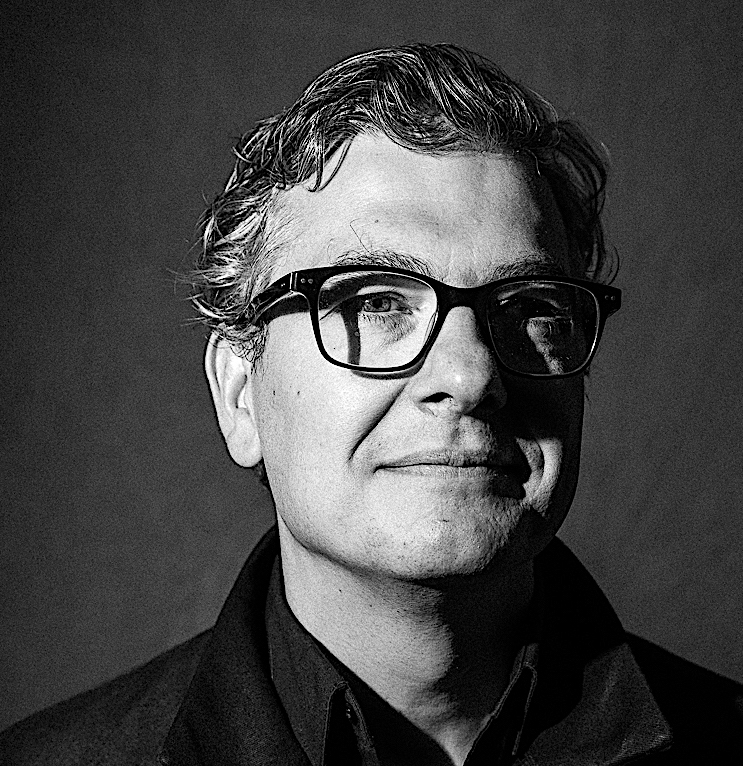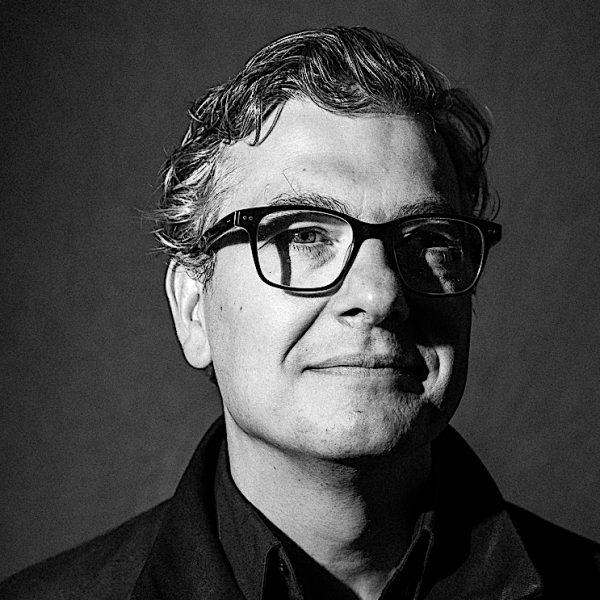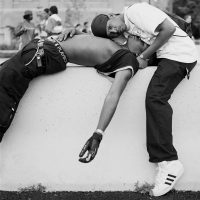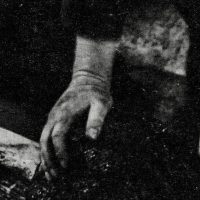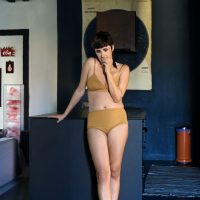Interview with Felix Hoffman, C/O Berlin and Brad Feuerhelm, ASX
February 2019
The last picture, the final image, imago Mortis, etc. The tale of death and the image has a very long history from some of the earliest folk paintings and tribal artifacts in which the thwarting of finality is expressed in artistic form and totemic stature. These images of death proliferate in human history. The photographic medium and its invention at the cusp of the industrial revolution seems to almost pointedly mark the transition in which technology, humanistic impulse and the direct questioning of iconic image worship fuse, or perhaps diffuse into a state of interlocked confusion.
The “birth” of the camera, the distribution of the photograph and the general attitude of spiritual matters in the Nineteenth Century with Charles Darwin and later Nietzsche created a perfect storm in which the photograph could begin to question the idea of “the unseen” as it related to spiritual matters. William Mumler, the most noted of spirit photographers almost single-handedly turned the camera into a device that manufactured belief through the technological aspects of the machine and the body with his image of Mary Todd Lincoln and her deceased husband Abraham. His images of “spirits” resting their hands on the shoulders of the living would become most controversial when he was brought before court.
The post-mortem photograph in the Nineteenth Century had a clear correlation with mortality and the living conditions of the times. Infant mortality rates being what they were, the employ of the local studio or itinerant photographer to make photographs of deceased loved ones was a significant occupation. The practice of photographing the corpse would dissipate as mortality rates improved and the cultures and attitudes toward death and its image was quietly, but rather quickly put in the rear view. One could also speculate that as the industry around death became a new occupation in which capitalistic tendencies were introduced to make death and dying an expensive pursuit, images of sadness, horror or shock were also detached from the final acts of memory and burial. I have made post mortem photographs of my mother and grandfather. They sit in my holding as something alien, other and not as a totem of memory, but rather something that gives less security to how I have been accustomed or persuaded to see death and its image.
Felix Hoffman has created the exhibition The Last Picture at C/O Berlin in which images from media, private collections, and artists have been assembled to contemplate how we have looked at death and the image in photographic terms from the beginnings to present. There is also an incredible accompanying exhibition catalogue produced with Spector books that illustrates the exhibition with essays and is imperative for anyone interested in the subject. Felix has been kind enough to grant us an interview for which I am thankful. Below, he gives his insights to my questions, but also really presses the point about how he personally developed the idea and how he sees the subject.
BF: Death is by own definition one of two defining experiences that are considered as universal to the human species-the other is of course, birth. And yet, within these two polar observations that encapsulate the human experience, book ending it as it were, we as a species are more engaged at least in the West with images of death and not birth.
In some ways, as it relates to image-making we celebrate death or at the very least take more time to consider it as an image than birth. Perhaps it is because one has been experienced and the other remains shrouded in mystery and anticipation. Do you personally have any thoughts as to why this is the case? Perhaps it is a marker of finality in image form? Perhaps it is a testament for the living that they are still holding power of their inevitable conclusion?

FH: In the occidental tradition in Europe and North America different ideas merge that desire to preserve the deceased as a picture. These tradition notions invoke the idea with which we are confronted in all Christian churches- a dead body hangs on a cross. The body becomes an image. Or as the German art historian Hans Belting once put it to paraphrase him:
The true purpose of a photograph is to depict something that is absent and thus can only be present in an image. A photograph makes manifest something that is not in the picture, and which can only manifest itself in the photograph. Read this way, a photograph of a dead person is not an abnormality but the very reason photographs exist. The dead person has already departed and their death is an unbearable absence only made bearable when swiftly filled with a photograph.
The other reason is the question of memory – in line with the invention of the medium, mass images of the dead emerged in the second half of the 19th century. A fashion wave that is not only reserved for the nobility and clergy, but also for simple people, in order to have a portrait, a memory picture of someone at all.
BF: So, that suggests that the recording of a photographic image of death actually speaks about the decimation of social hierarchy as we all share the same punch line. That is interesting as in the past to get a memento mori or a painting of the deceased would certainly evoke class status.
The exhibition that you have arranged is one that is beset in my own research, acquisition/collection of images, but also features ruminations as a curator on how to deliver an exhibition that could offend a public very easily. How long did it take you to put the exhibition together and what were some of the obstacles that you faced either internally at the museum or with press and public spaces in which the exhibition was advertised such as newspapers, but also outdoor signage, etc. C/O Berlin is a private museum space correct? You must have quite a bit of freedom….
FH: In 1999 I found pictures of the dead that had been photographed “as if alive” in Vienna around 1850 – a practice that was widespread especially in Catholic areas of Europe. But what is photography doing here? It brings to life and does exactly the opposite of what photo theory repeatedly postulates: To mortify the counterpart in the moment of photographing by cutting through a time continuum that surrounds us all. That was my starting point.
It took me a long time to develop the C/O Berlin Foundation, where I have been working since 2005, as an institution in such a way that museum loans, financial leeway and a viable concept fit together. The exhibition now mixes photographic images from amateurs, journalists and artists and gives an overview from 1840 until today in three chapters “Dying “Killing” “Surviving.”

BF: The lie of photography is its only truth. I guess you and I are both of an age where we can speak about the history of exhibiting or publishing books about death and photography. I remember that in the 90’s and early 2000s that there were similar exhibitions and publications around the concept of death and photography. “The Dead”, “Looking at Death”, “Photography and Death”, The Stanley Burns “Sleeping Beauty” and Medical histories of photography. Eugenia Parry’s book about crime scenes. Joel-Peter Witkin, Jeffrey Silverthorne, Andres Serrano, Sally Mann, Rudolf Schaeffer, etc. etc. etc. ad nausea and then for about the last 20 years, it has been a fairly quiet topic. What are your speculations about why the topic has been muted over the past couple of decades? Is it the post-aids scare world? Is it simply that it works in cycles?
FH:I don’t know of any exhibitions that have ever attempted a historical overview of the subject. Often painting and graphics were mixed with photography without really doing justice to the subject and focusing on the medium.
Especially in the last 20 years, digitalization has completely changed our viewing habits and thus our direct contact with the corpse. The debate has shifted and is now taking place in the cinema or on TV, visible to everyone. But who has experienced a house lay out today, featuring a dead person in the room? The newspapers and media are full of death and suffering. It is astonishing that especially catastrophes, suffering and death and their media distribution reveal the way in which photographic images function. But in our private lives we are far from it and do not want to see death.
BF: There is certain elasticity in that idea. We are almost sweeping away and removing death as a one to one ration and in America in particular, we are certainly more interested in building a financial industry around death and dying. Our concentration on fame, money and material value are certainly at odds with dying Barbara Krueger “I Shop, therefore I am” comes to mind. Perhaps Elizabeth Kubler-Ross may have opined, “I Die, therefore I am”.
My last question wasn’t necessarily quite a set up for this one, but in some ways it makes sense now to ask about how you chose the material that you did. I recognize some of the historic material to be from the Burns’ archive, but also wonder how you came to choose the contemporary artists such as Tacita Dean and Andres Serrano and Erik Kessels over the names previously mentioned or perhaps unknown voices working on this sort of thing? How does one begin the process of choosing a better death?
FH: When selecting the exhibits, we tried to focus entirely on the dead body, the corpse. The shifting of images from different contexts into the realm of art plays a role. For example, media images were important here: As a paper sculpture, the German artist Thomas Demand has recreated a press image from Whitney Houston’s last dinner in 2014 in paper. He then takes a photo of this paper culture. So it refers to a picture that many people know.
And so at various points we have these shifts and questions about the appropriation of pictures: Appropriation.
The exhibition is also about shifts in the meaning of pictures through context: do I look at a picture differently when it’s published in a newspaper, or when the same picture by Andy Warhol hangs on the wall as a screen print? The question of appropriation puts our viewing habits to a fundamental test.
BF: We as a society getting back to your previous point certainly have a maligned way of appropriating death. Perhaps photography is a perfect totem or stand in for our fear of it.
…. If I might ask about one piece in particular, why did you choose to exhibit the Kessels piece as to my knowledge his father did not die, but it was close… but I might have that wrong…and then…why not the work about his sister?
FH: The last chapter of the exhibition deals with the survivors’ processing strategies and the survivors’ view of what happened. How do we process death and disappearance? Erik Kessels father worked all his life on car wrecks and renovated them. The father is dying and the son finds an unfinished wreck and finishes it in love. Although Erik’s father recovered in the end, the son does something for his father: he builds him a monument. It is about the son’s look at what’s happening or what’s about to happen. It wasn’t important to me whether the father had already died, but how the artist dealt with it. The finished car is like a tombstone to escape oblivion and to last forever.

BF: Ok. I think of the age we live in and the fast changes that inhabit our world by means of technology. We live in a society governed by an incalculable volume of change and data that push the currents of culture, life and politics to the edge of acceptability through the speed of its network qualities and the spiralling nature of these fast-moving conduits. What I mean is that with the technological changes that are occurring both in for example AI and communications, how do we incorporate the question of existence in those terms? For example, with death in particular, we are looking at ways in which the human body may elude death or at least postpone it, separate it from living tissue by interfacing our cerebral lives into a more machine-oriented domain and work to enable propositions regarding the complete disposal of our living bodily selves. This is becoming less and less Sci-Fi and more accepted by the day as a realistic likelihood. In thinking out about what Paul Virilio might have argued as the boundless speed of technology’s ability to counter-determine society, democracy and its progress, death is at the forefront of the debate, as always. In examining this relationship with AI, Internet and the post-industrialized world, were you able to inject this aspect into the exhibition? I did note the use of newspaper imagery, which I loved…
FH:I wasn’t interested in the actual body and strategies for preserving it, but rather the image itself. And that’s where photography plays a decisive role. It is interesting to note that memory is shifting into digital space today: at www.reddit.com people and survivors place last images of people in digital space, since physical space is changing and one is looking for a new space for endless memory.
BF: Do you feel that there is a national aspect to the way death or images of death are interpreted and distributed? For example, you use a very…Western palette in your exhibition, and by no doubt we can all agree that various cultures historically up to the present have a different solution for the image and death. However, keeping our focus to your exhibition and the nationalities involved, which seem to be mostly from the perspective of America and Germany, are you able to ascertain any difference of their handling? Did the war, for example determine either nation’s outcome for dealing with death?
I can think of Kubler-Ross work the “American Way of Death” or in psychoanalytical interest with Ernest Becker’s “Denial of Death” through to a more practical archive cum photographic art -application such as Michael Lesy’s Wisconsin Death Trip as ways in which the American system has been exposed or has communicated on the idea of death and its image. Perhaps the same is in Germany with Gerhard Richter’s October 18, 1977 series about the RAF and the works surrounding Stammheim prison which was a major force in the German recognition of terrorism, but also death and Suicide.
Germany, from an outside point of view seems to have this impenetrable weight of death in its post-war society and yet the oppressive feature of German-ness, that is also touched on obliquely in works by Thomas Demand (also exhibited) are more of an allusion, a fondness for dead-tech material such as Kiefer and concrete and seemed anaesthetized and hidden under the surface of things. How would you explain the dichotomy of dealing with death between the two nations?
FH: The big question was: Do we want to integrate the themes of “killing” and “war”, i.e. aggressive dying, into the exhibition? When we decided to do this, the question was how to deal with war and murder. Many colleagues said: Please don’t forget Hiroshima. And you should also consider the Russian genocide, Rwanda, the genocide in the Balkans, and so on.
That is why, when it came to killing, we concentrated entirely on Germany and its history, the Holocaust and terrorism by the RAF.

BF: How have the reactions been to the exhibit so far? Have you had positive healing reviews on occasion from people that may have healed them process the concept? Adversely, have you had negative reviews from people and are there age restrictions to this exhibit? If not, have you had any minors in and how do they grasp it?
FH: The reactions are very individual. Some visitors react strongly to the children’s pictures from the 19th century, others perceive the Morgue or the Holocaust as an emotional challenge. I have had a lot of different feedback. The theme polarizes and there seems to be no recipe for a reception for such a theme.
BF: …and yet it’s the punch line of life that we all share. Was there anything that you cut from the exhibit that you cut for the reasons of possibly being too offensive or difficult? Conversely, were there any images that you cut for being too quotidian? Such a strange way to ask about this sort of decision-making, I know…
FH: No. But there were artists who didn’t want to be involved for personal reasons. Unfortunately, mainly women.
We concentrated on the dead body and as little as possible metaphors or detour strategies. The examination of the corpse was very important to me – but also because of the Western tradition mentioned at the beginning.
And of course you also have to be able to afford loans: Sometimes it is a long way until you find an object in a collection, you have convinced the owner to lend it to you for 3 months and then to be able to afford it as a loan with couriers, transport modalities. Some loans would have exceeded the financial framework – even in the catalogue. You have to cut back and there is a lot of work involved that you don’t see anymore.
BF: Thank you for this and your brave efforts to exhibit such heavy work.
